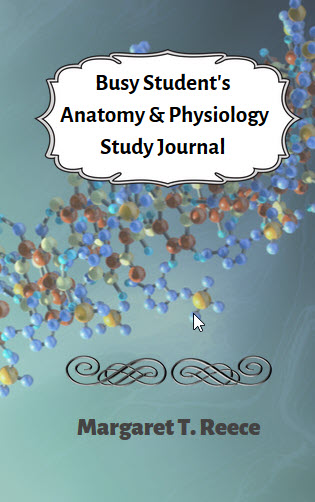Space your study of anatomy & physiology by using a take-action journal
Are you so busy that you get behind in your study of anatomy and physiology? Do your anatomy and physiology lectures come so quickly one after the other that you suddenly find yourself way behind and struggling to keep up? Are you cramming just before exams and then doing a ‘brain dump’ to make room for the next batch of information?
Granted, cramming for exams at the last minute sometimes works and gives good test scores. However, if the purpose of taking a course in anatomy and physiology is to begin a career in healthcare then the objective of your study plan should be to learn anatomy and physiology, to embed human anatomy and physiology firmly in your memory for future use.
The good news is that there is a way for you to enhance your study of anatomy and physiology and create long-term memory. Decades of learning theory research has established that spacing review of a topic over weeks, and interleaving the study of related topics, improve both knowledge retrieval and its storage in the brain. However, spacing your study of anatomy and physiology requires an easy-to-follow plan.
Your plan must be simple and leave enough time for you to study your other courses as well. Journals lend themselves to providing such a plan. Keeping a journal includes short sessions of repeated review of specific topics spread over weeks. Revisiting ideas over time embeds them in long-term memory.
Organizing a regular study plan and sticking with it can be a frustrating task without help. This journal is a small book that you can easily carry with you making it readily available as ideas occur to you. Insights about how parts of the body work together sometimes slip away if not written down when they surface in the mind.
The ‘Busy Student’s Anatomy & Physiology Study Journal’ is designed specially to meet the demands of a course like anatomy and physiology, which is delivered as a high content set of lectures. Using it you space your review of each lecture over 30 days. This journal walks you through a simple process of spacing and interleaving of related topics from multiple lectures. And it includes a calendar for scheduling and tracking your practice.
There is an added advantage to this type of journal. Each review entry in the journal asks for new ideas and realizations about the lecture’s topic. To succinctly write the entries, your mind must practice knowledge retrieval. Retrieving information from long-term memory edits and strengthens the original memory. This effect of knowledge retrieval is also why practice testing is used as a learning tool in many courses.
Give the ‘Busy Student’s Anatomy & Physiology Study Journal’ a try. Click HERE to look inside it at Amazon. Get a copy even if you are already partway through your anatomy and physiology course. You will be glad you did. You owe it to yourself and your future patients to really learn anatomy and physiology of the human body.
Further reading:
Best Way to Learn Anatomy and Physiology
Human Memory Formation and Recall
Do you have questions?
Send me an email with your questions at DrReece@MedicalScienceNavigator.com or put them in the comment box. I always read my mail and answer it. Please share this article with your fellow students taking anatomy and physiology. I truly believe that this take-action journal will be a great help with what we all accept is a difficult course.
Margaret Thompson Reece PhD, physiologist, former Senior Scientist and Laboratory Director at academic medical centers in California, New York and Massachusetts is now Manager at Reece Biomedical Consulting LLC.
She taught physiology for over 30 years to undergraduate and graduate students, at two- and four-year colleges, in the classroom and in the research laboratory. Her books “Physiology: Custom-Designed Chemistry”, “Inside the Closed World of the Brain”, and her online course “30-Day Challenge: Craft Your Plan for Learning Physiology”, and “Busy Student’s Anatomy & Physiology Study Journal” are created for those planning a career in healthcare. More about her books is available at https://www.amazon.com/author/margaretreece. You may contact Dr. Reece at DrReece@MedicalScienceNavigator.com, or on LinkedIn.



